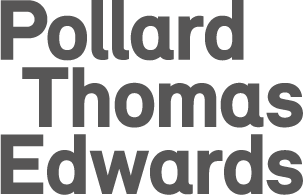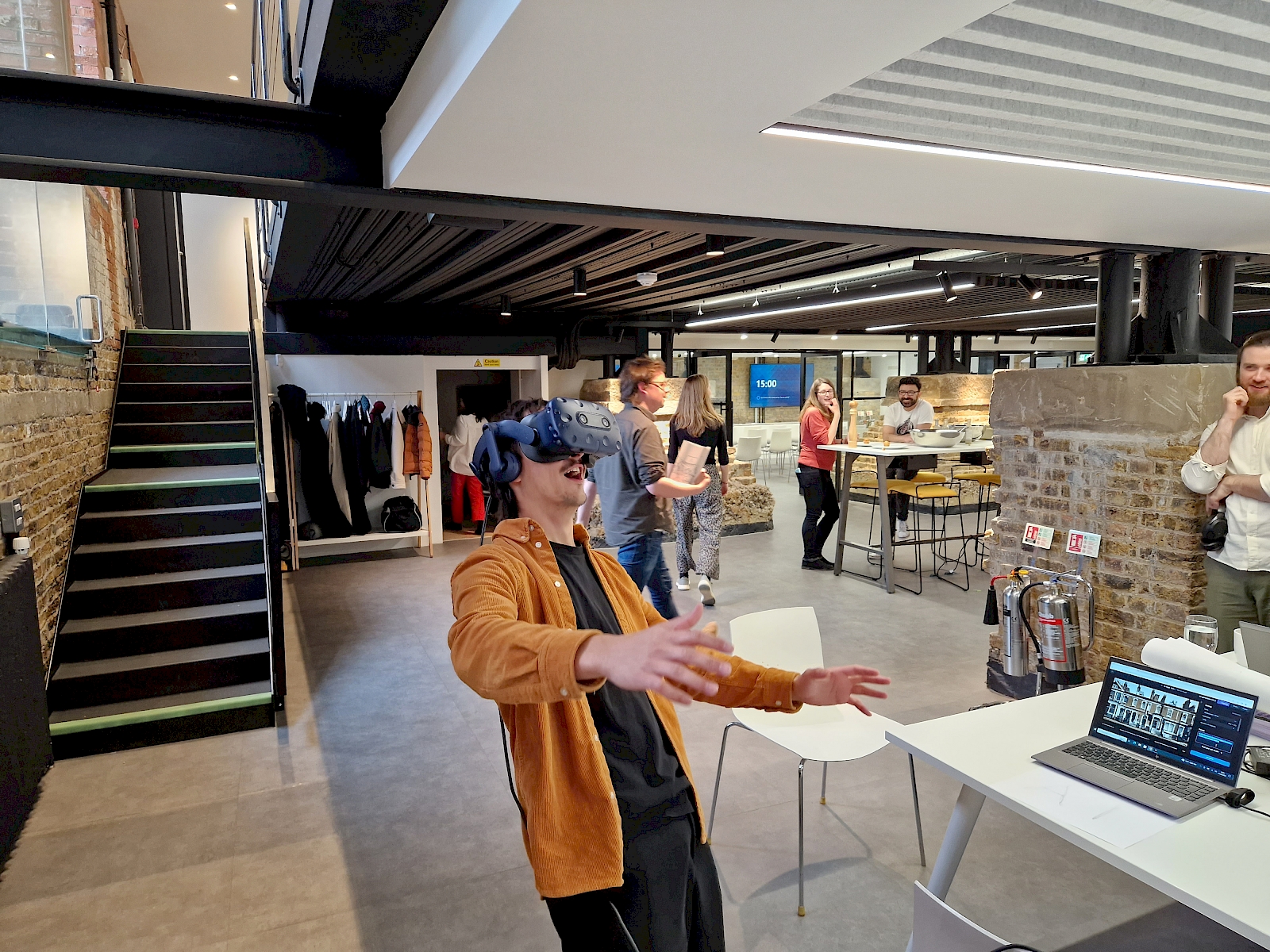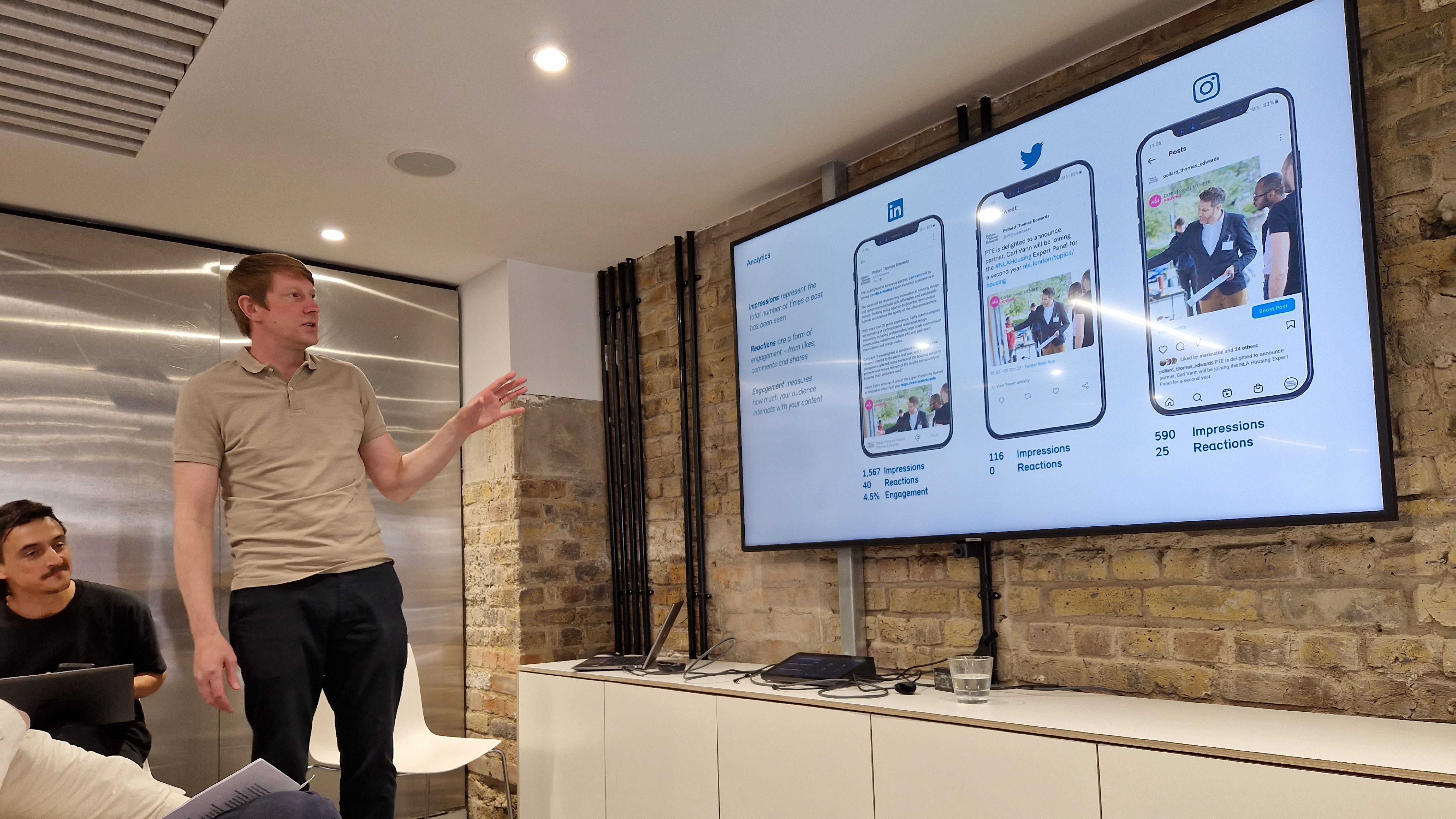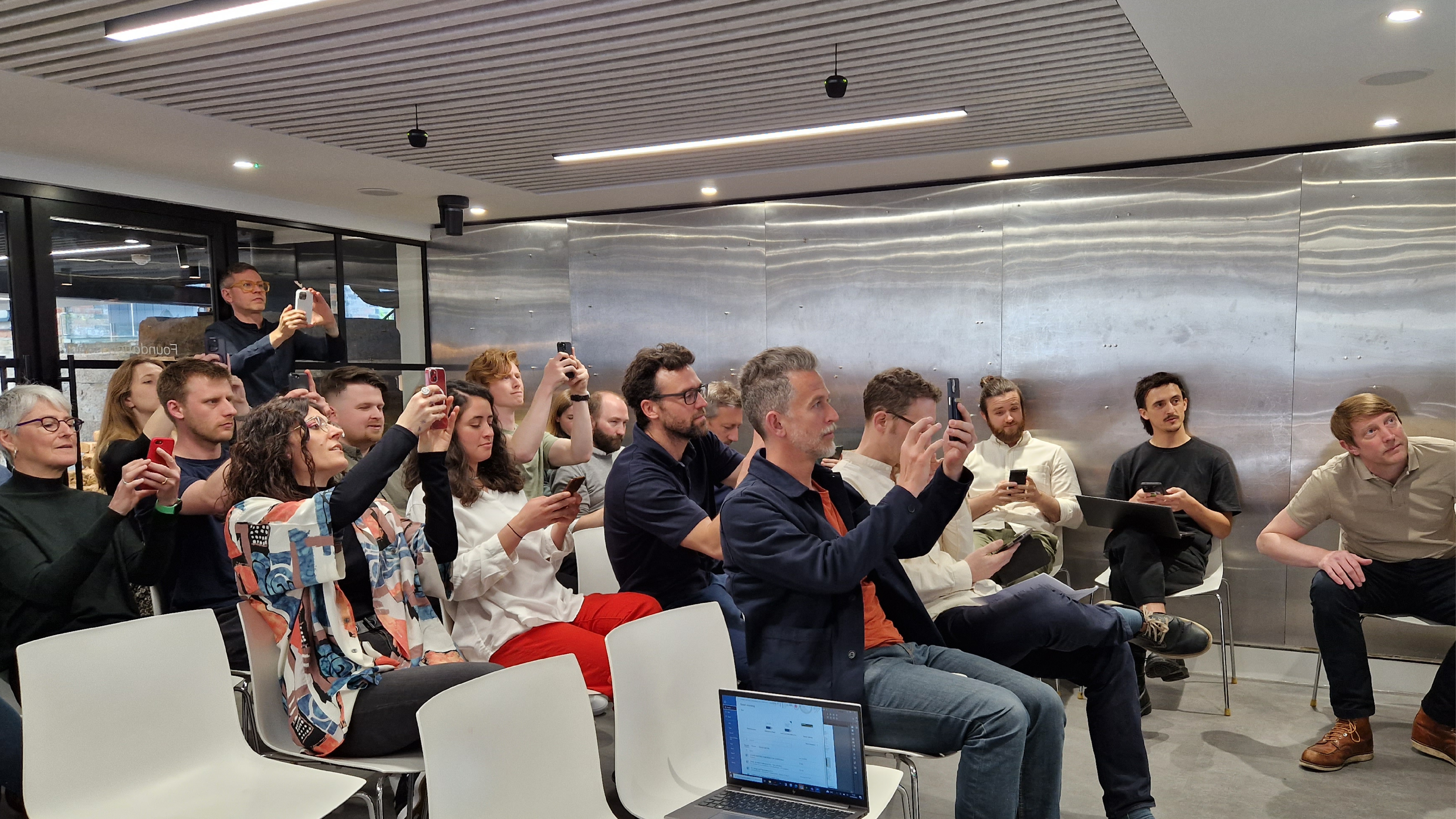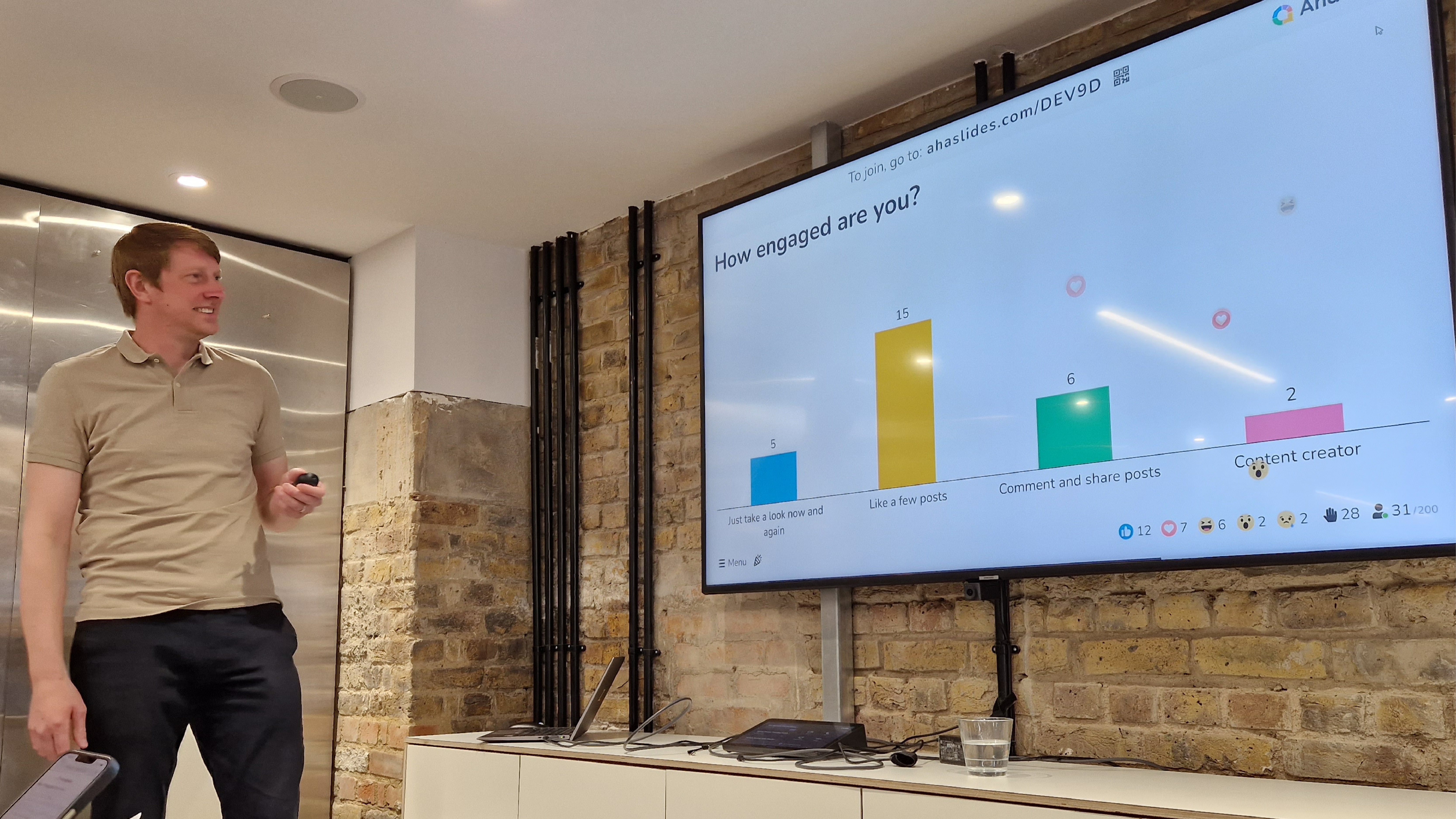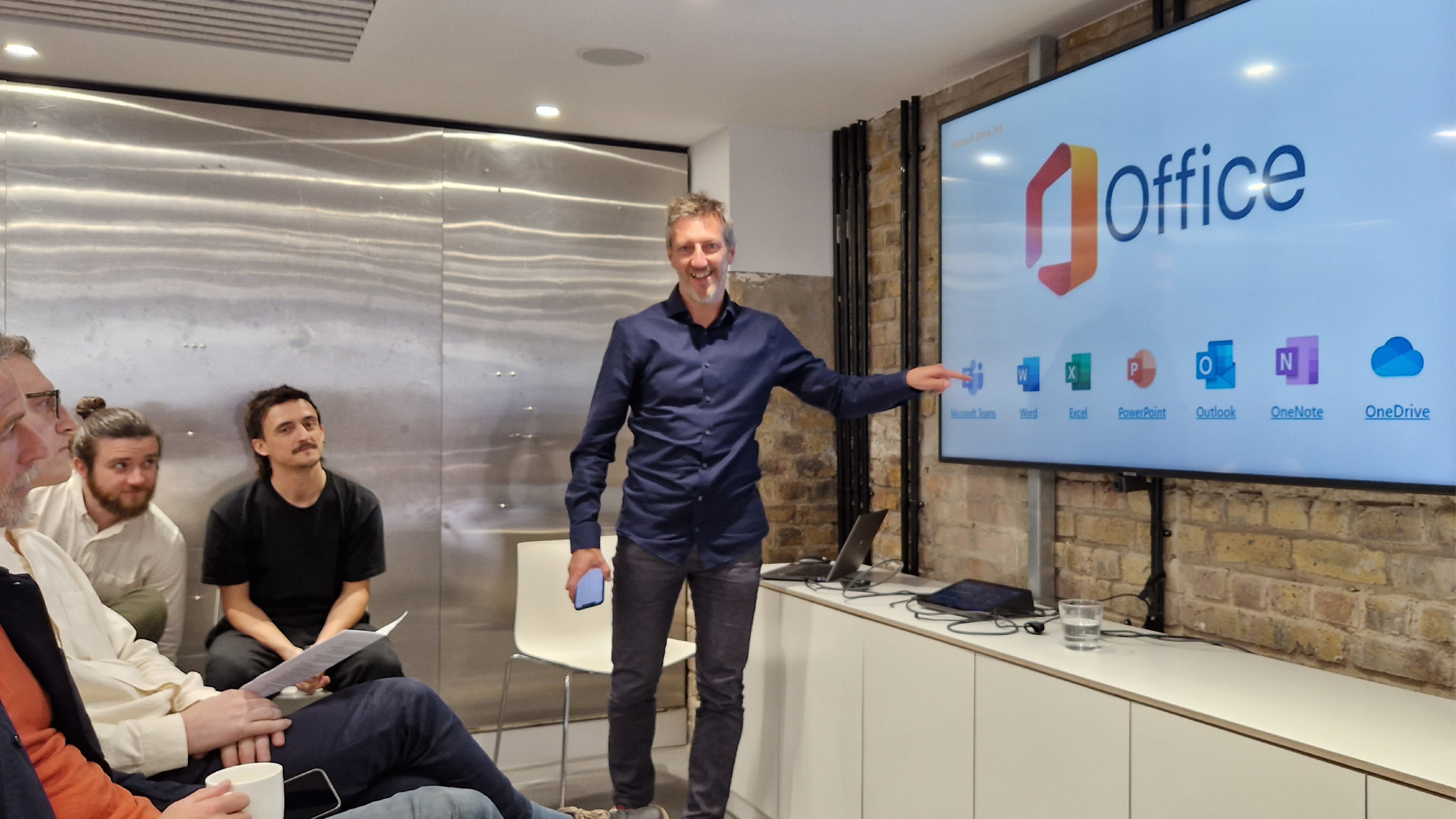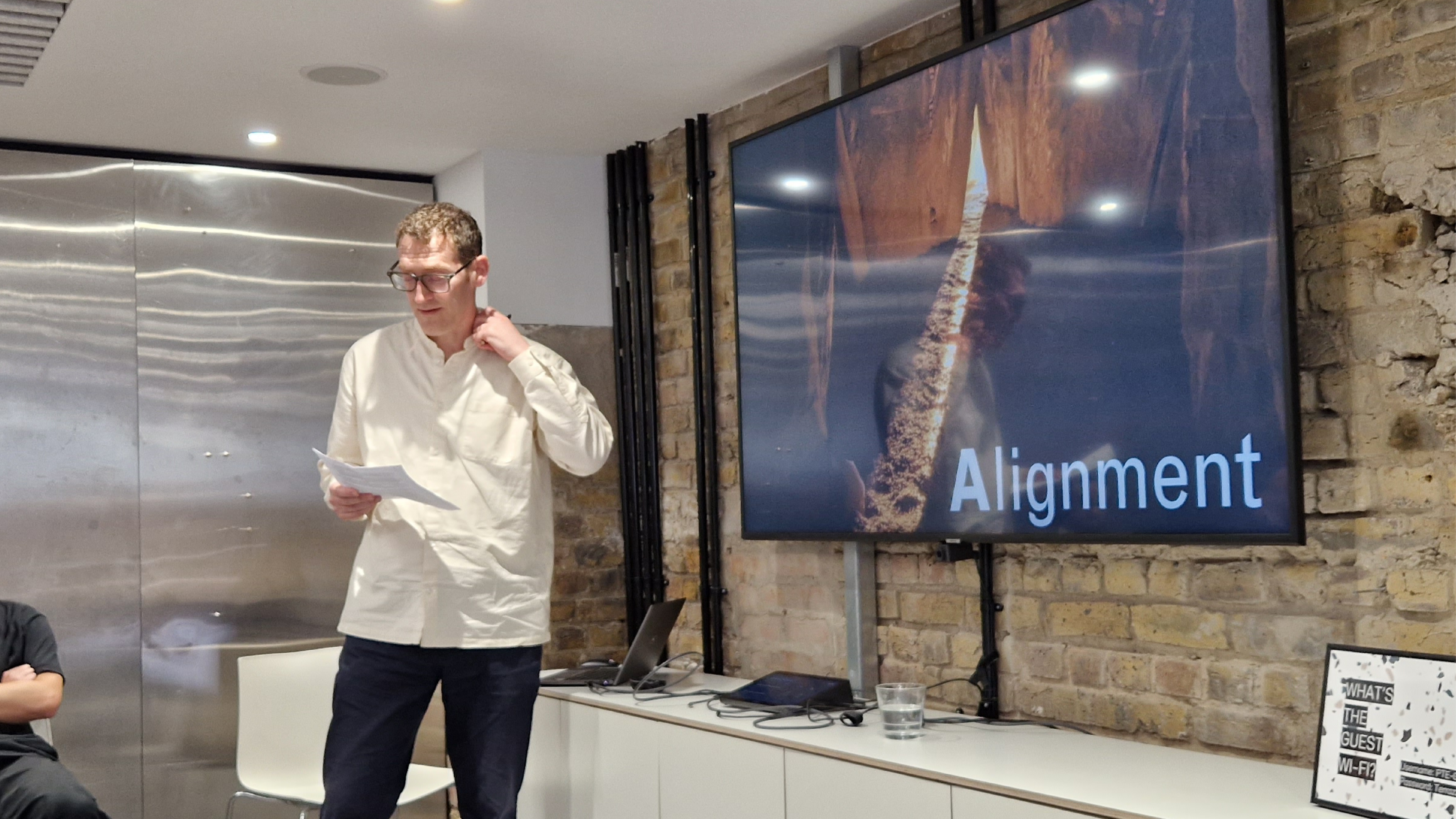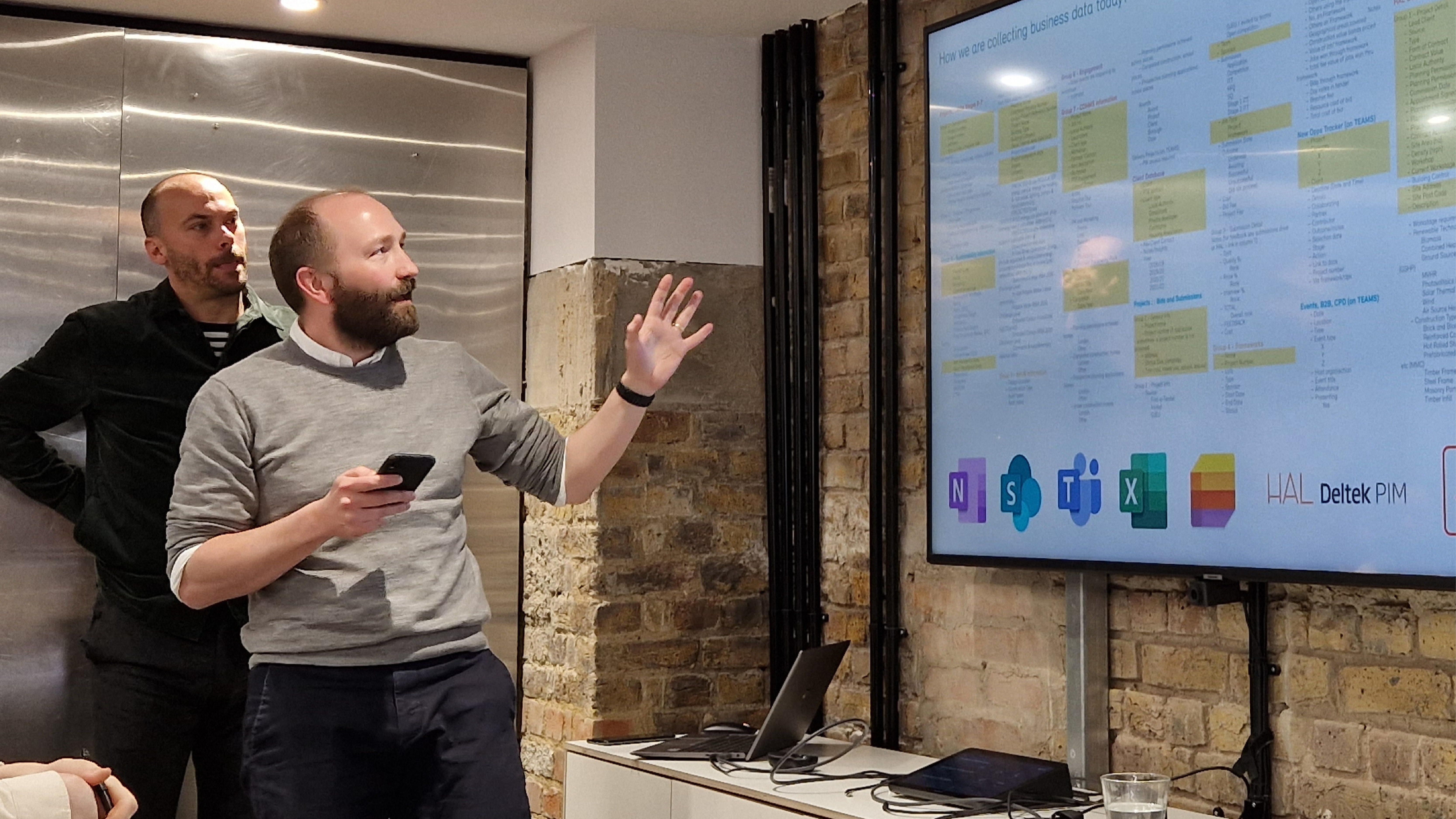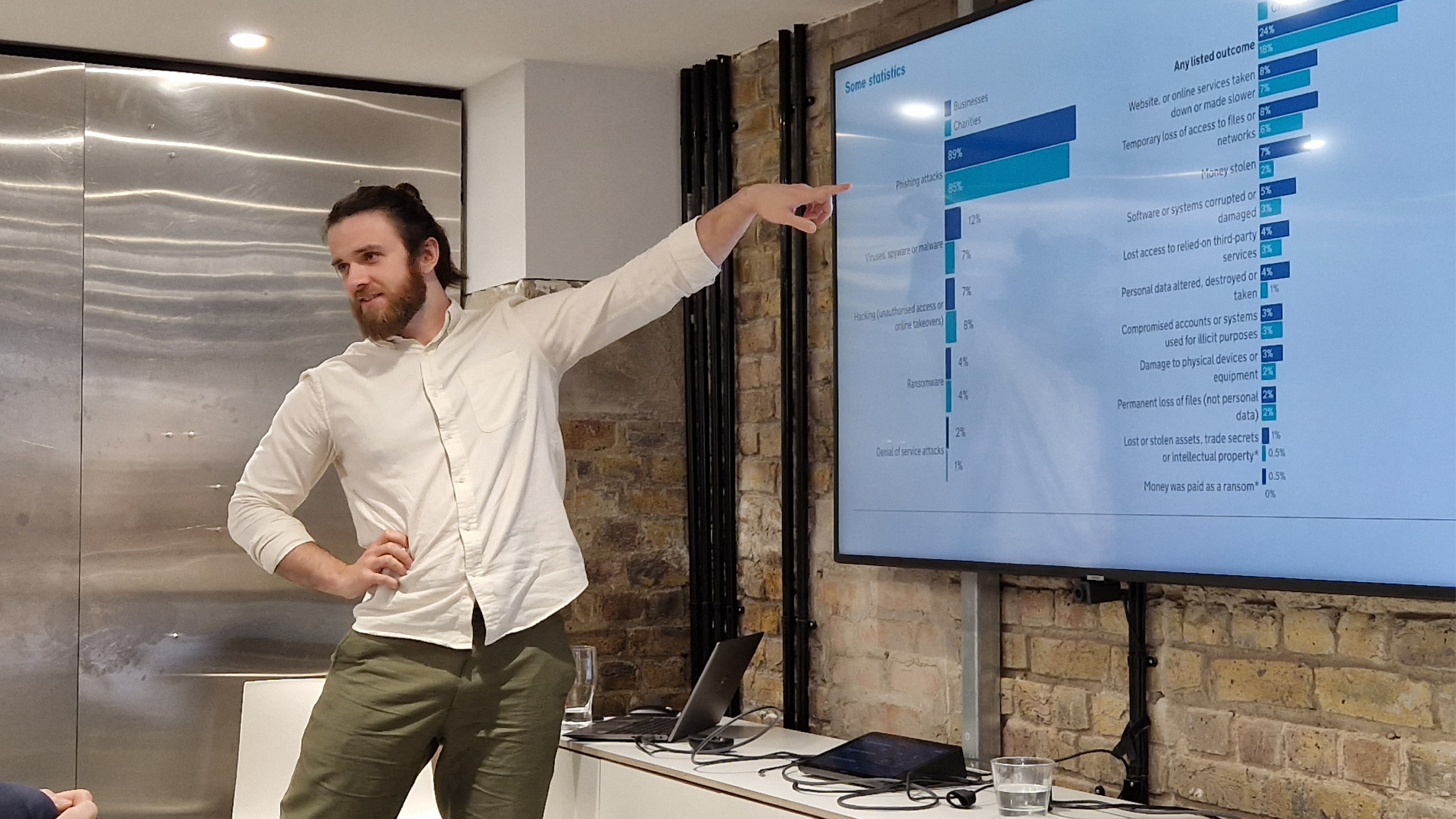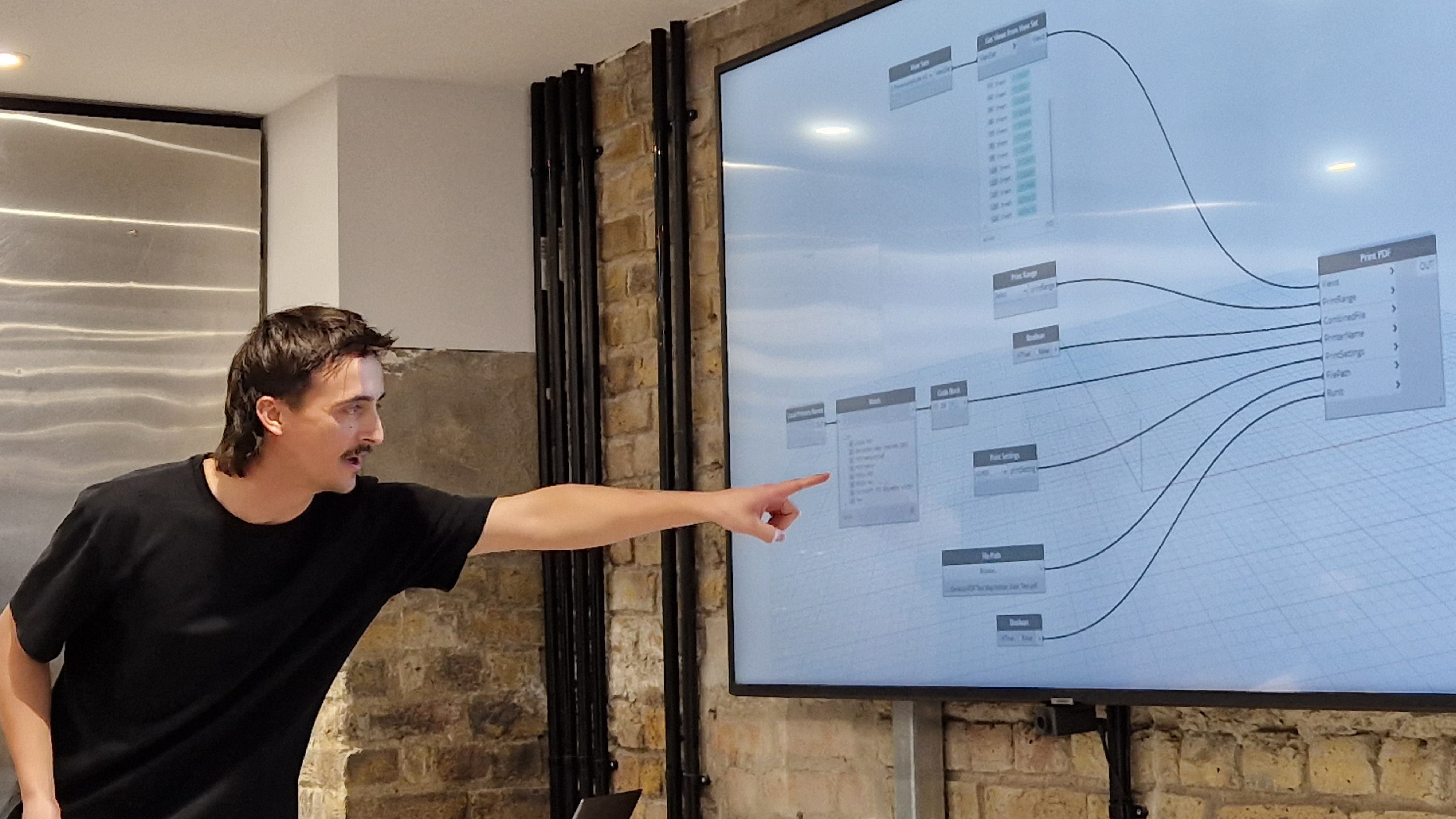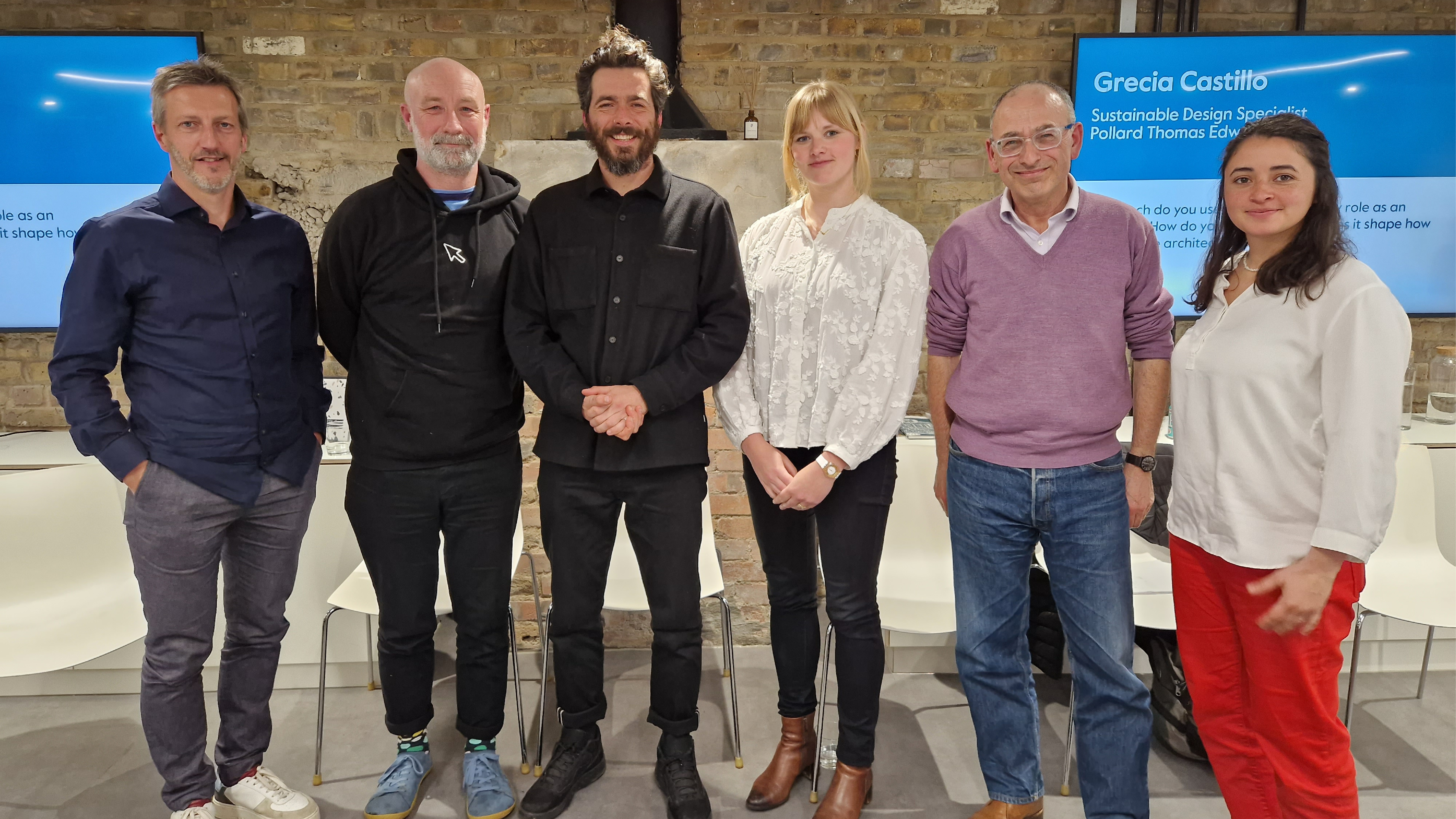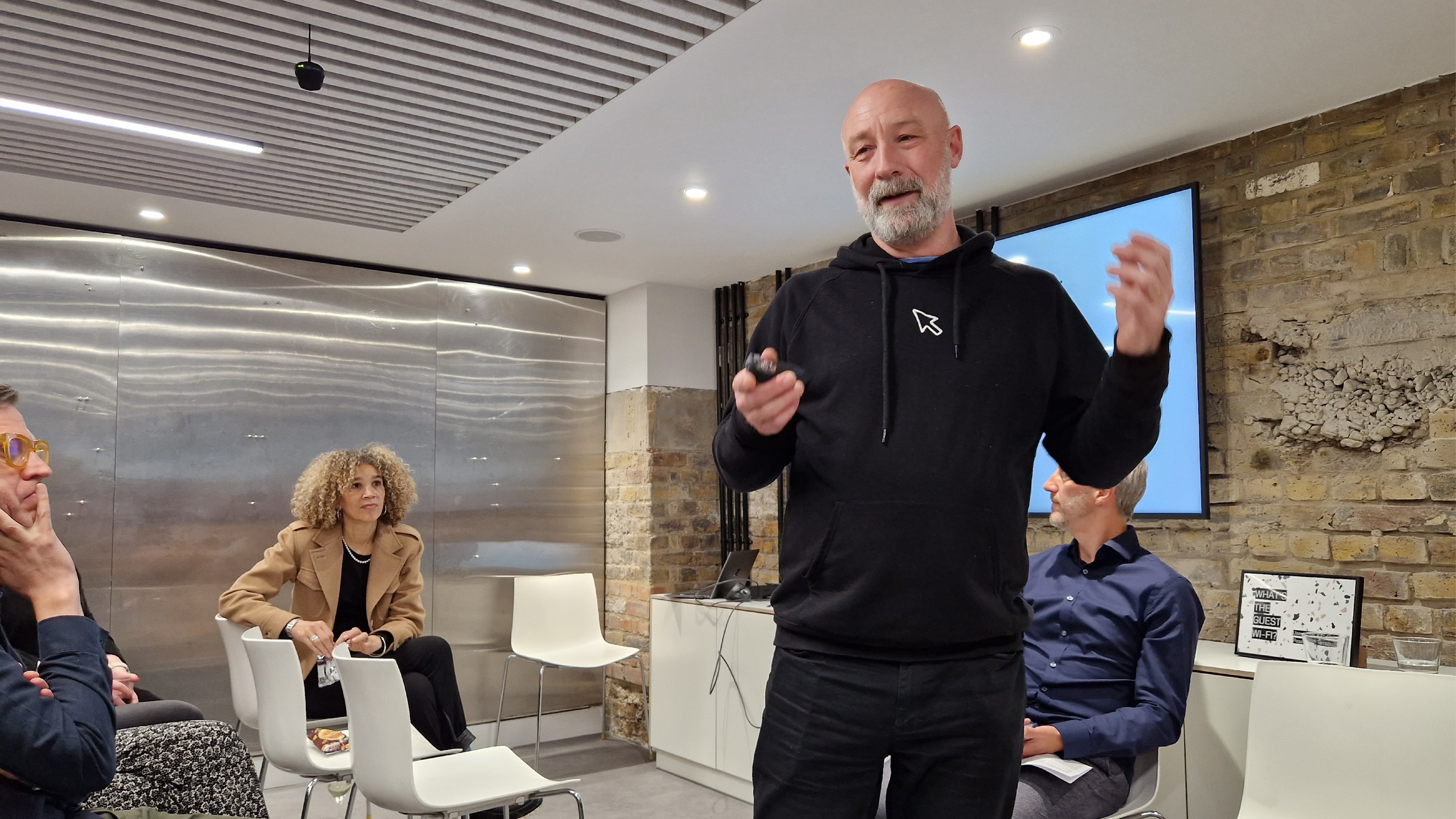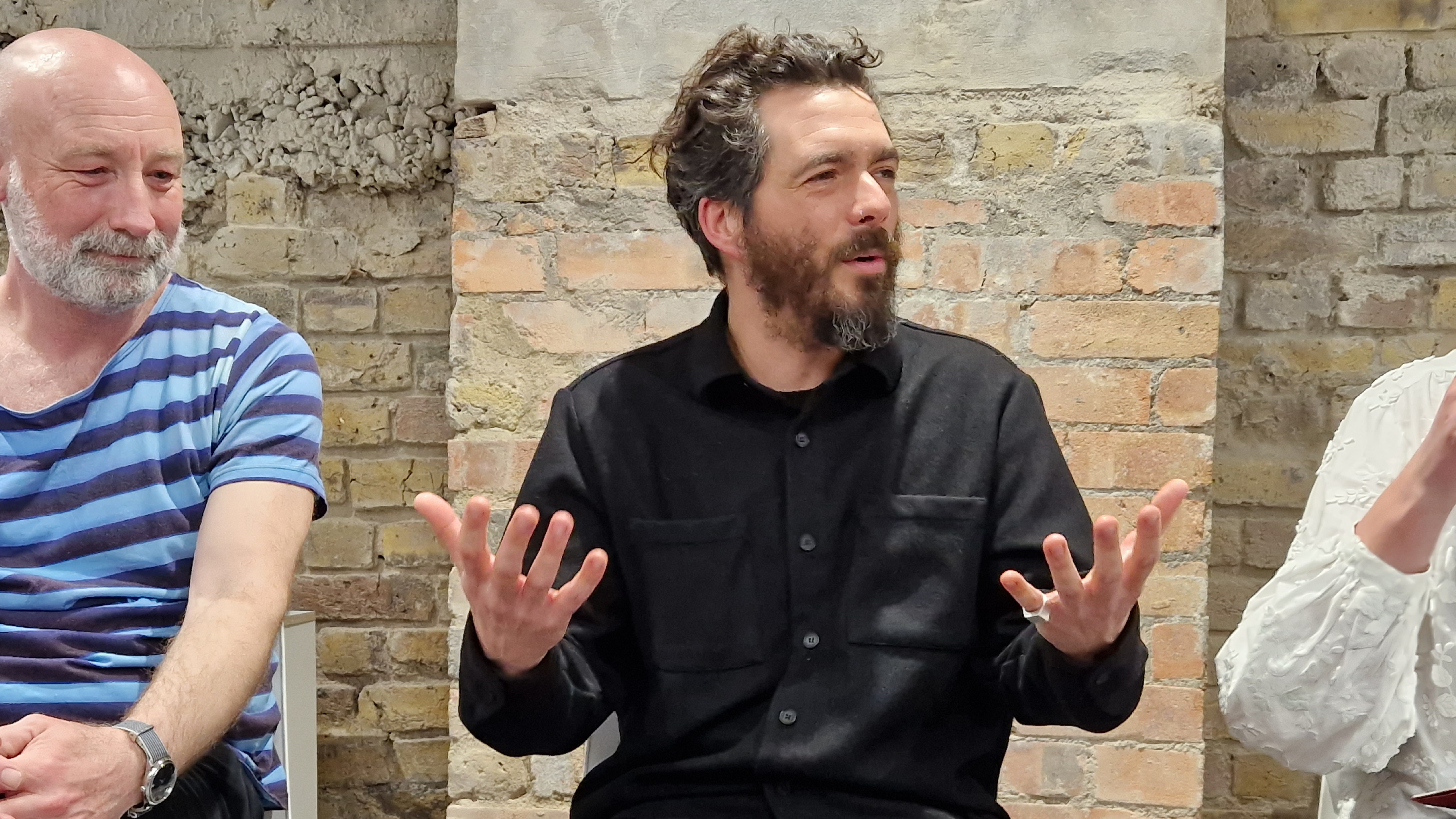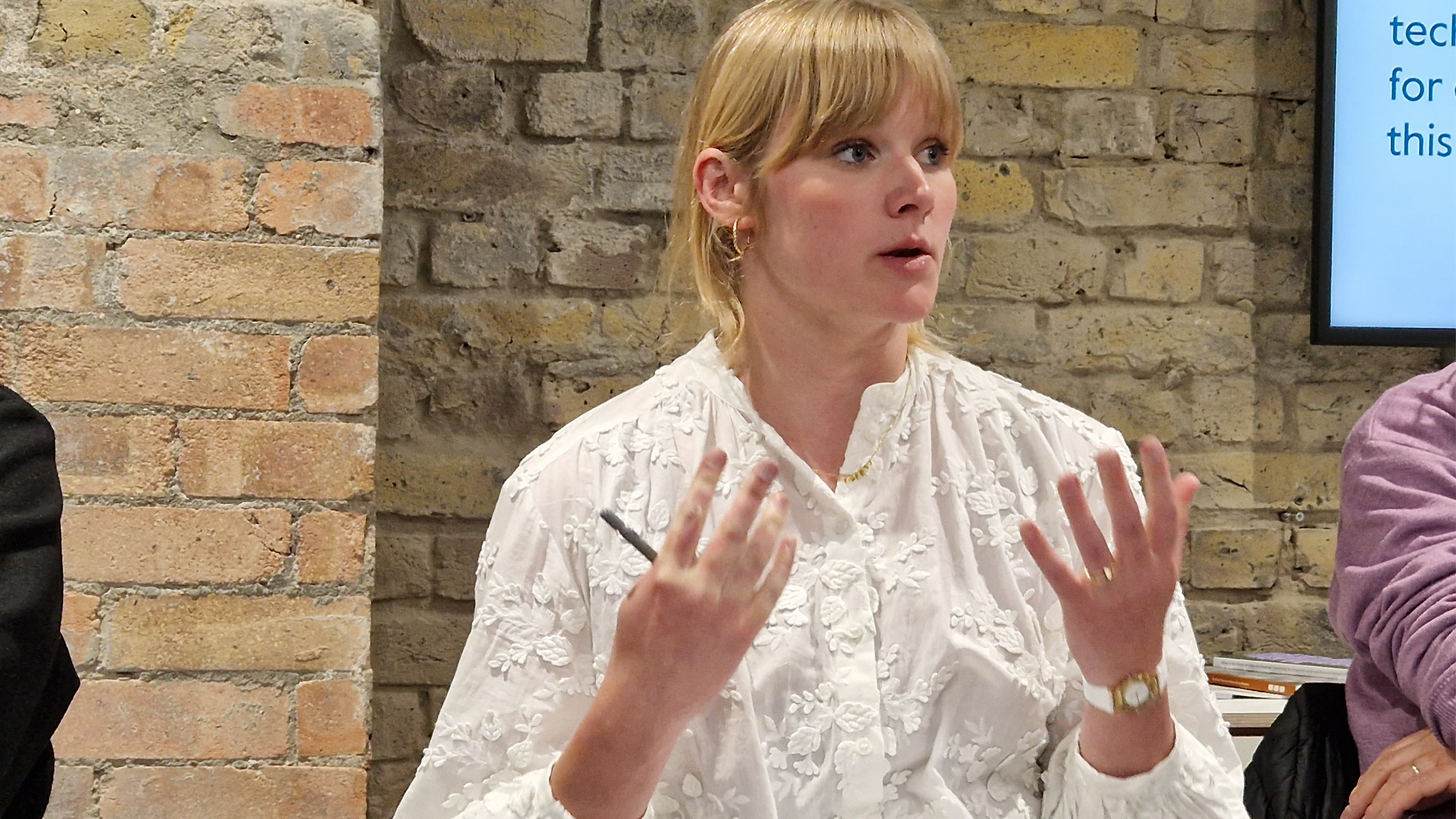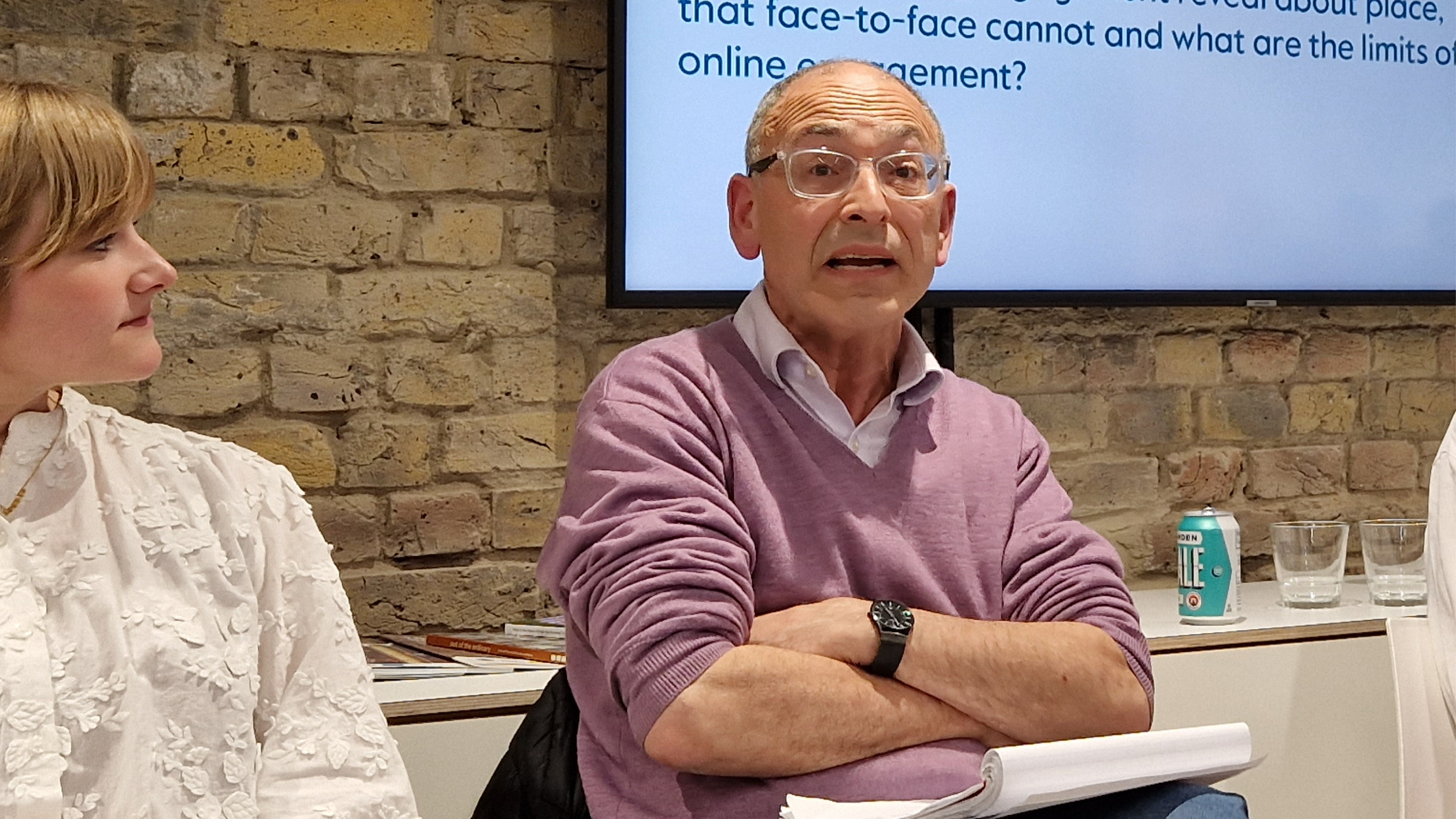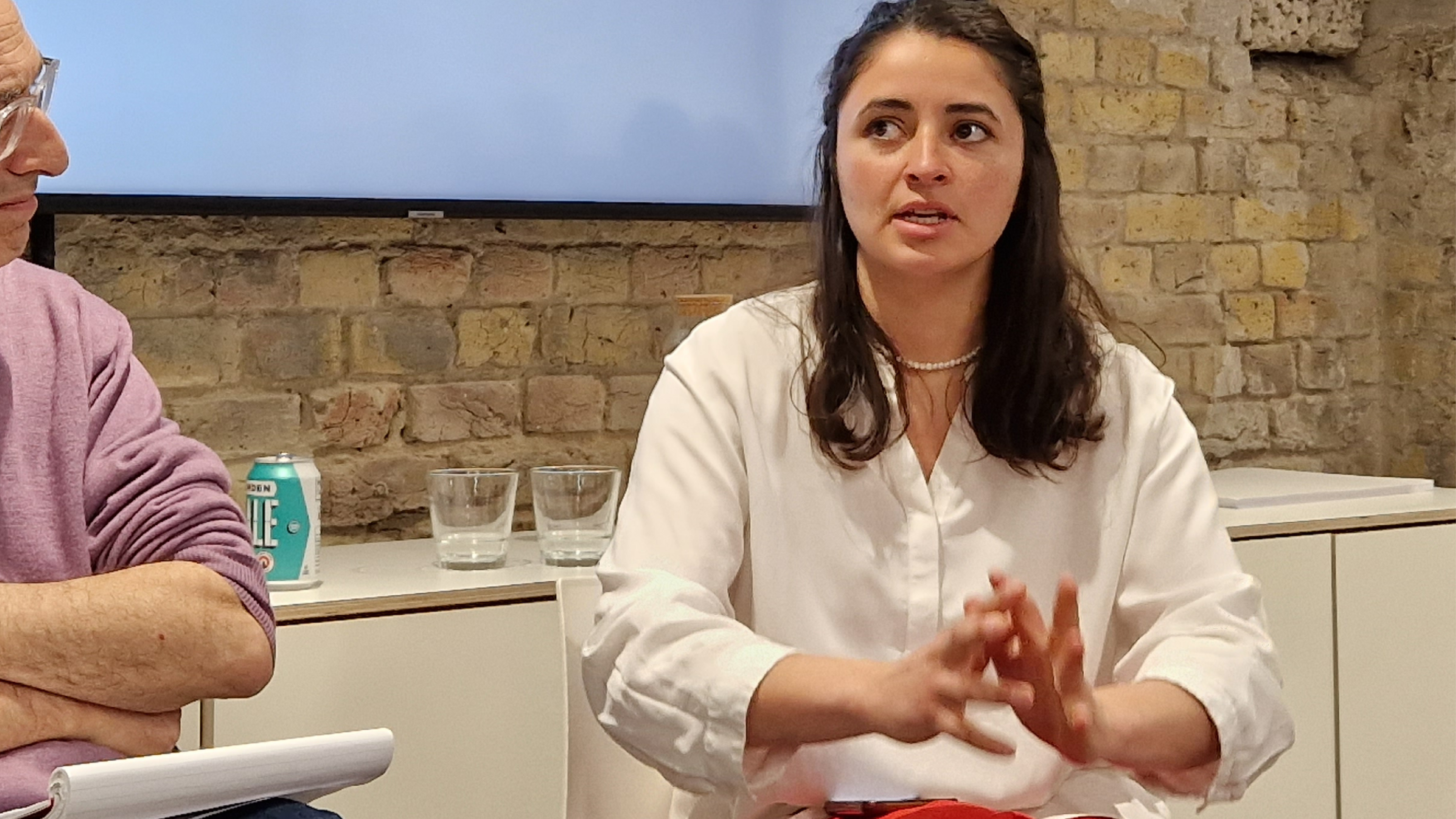Our first ‘tech’ conference day focused on super-contemporary working practice, and asked: how do we work today – and tomorrow?
Our ‘Tech’ conference began with a double act: an overview from comms boss Tim Metcalfe and project and innovation partner Simon Whitley, explaining how we’d be looking at the technologies shaping the working environment today – and tomorrow. Tim began by looking backwards, showing vintage slides of the PTE of yore: architects, some still with us today, surrounded by files and folders, a drawing trolley by every desk (with sheets of A1s pegged to them) and even ‘while you were out’ tickets, which staff were given if they missed a phone call while out on site.
Simon focused on ‘tech today and tomorrow’ launched his intro with an opening statement - drafted by AI text processor Chat GPT in ‘the style of a Yorkshireman’ - which told us to expect ‘a bloody good conference’. His overview trailed his later talk on data, and how this vital raw material – fed through AI models, discussed by Rory Olcayto in his later Pecha Kucha - is transforming working practice. ‘AI is helping computers to arriving at a wider range of potential solutions to problems from raw data input,’ he explained, lending a pioneering tone to the days programme.
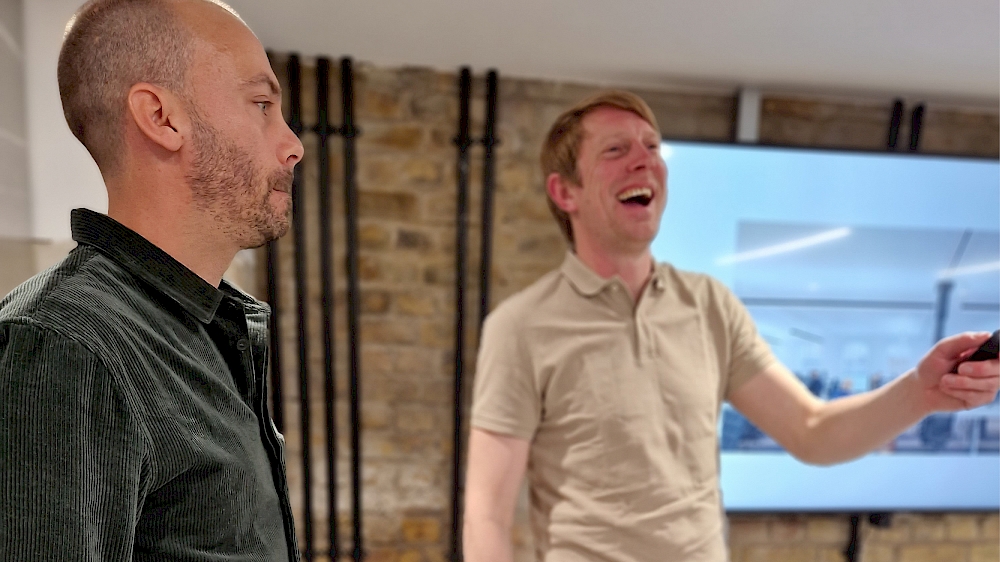
BIM Surgery
A BIM surgery led by architect Laura Binaburo with architectural assistant Javier Martin and technician Byron Peard had a simple remit: growing a friendly, knowledgeable in-house BIM community that welcomes all-comers. What followed was an old-fashioned Q+A mixed with a show and tell. So we learned about the monthly BIM committee meeting (and how it can help design teams) and how all logged queries are used to inform future planning. We learned how to ‘keep BIM models healthy’; and how, for the workflow-focused project architect, ‘BIM gathers data to produce accommodation schedules and massing – to generate information for stage reports.’ And we learned about model sizes – and the pros and cons of splitting large-scale projects into multiple models at inception. There was a focus too, on COBie (Construction-Operations Building Information Exchange) and how it can help capture and record important project data at the point of origin, a service PTE, offers clients - one of very few architects to do so.
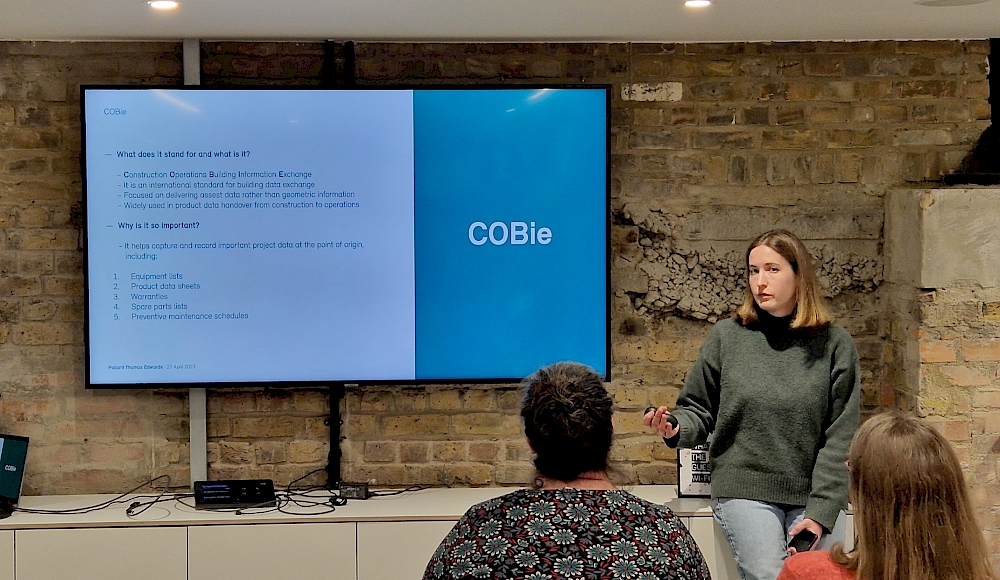
Show and tell
Tim began with a close-in look at our social media profile – ad strategy: which platforms we use – and what for, with a special focus on our refreshed Instagram feed which has been recently revised to focus explicitly on PTE’s design culture.
Partner Roger Holdsworth looked at handy office 365 apps, like Microsoft’s Power Apps, a suite of tools, that allows you to build custom apps for your own business needs.
Writer and critic Rory Olcayto provided a guide to the ‘uncanny, vast and confusing world of AI’ covering a wide range of topics linked to the emerging tech, from ‘aligning’ AI models to human values to the ‘corporate landgrab’ some tech companies are making when ‘training’ their AI models with data culled from user-generated content online that the creator is not being remunerated for.
Peter Watkins and Simon teamed up to explore data and workflows: how, if cleverly pooled and easily accessed, it can be used to avoid repetition in project procurement and management, and also, inspired by David McCandless’s 2009 book Information is Beautiful, how it can be presented to ensure consumption, apprehension and consistency.
IT Manager Phil Smith’s introduction to cyber security was a treat: a clear, hyperbole-free take on online crime with real insight on ‘call centre’ phone hacking operations, and the surprising demography of many of the criminals involved: often well educated, and rarely from low-income or impoverished households. And while cybercrime is overwhelmingly the preserve of males, female hackers are on the rise. And as for that Hollywood scenario where the lone hacker says, ‘I’m in..’ – it doesn’t really happen. Hackers target people – not computers. In any given system, it seems, humans are usually the weakest link.
Byron wrapped the session with a talk on the more glamorous office tech ready to use: from a VuCity and VR headsets to 3D printers and Firefly, Adobe’s family of creative generative AI models.
Lunch
Lunch this week was made and Spring green vegetarian lasagne prepared by Louisa Newman and her partner – who will be married later this year! With very best wishes for the big day, from all at PTE X
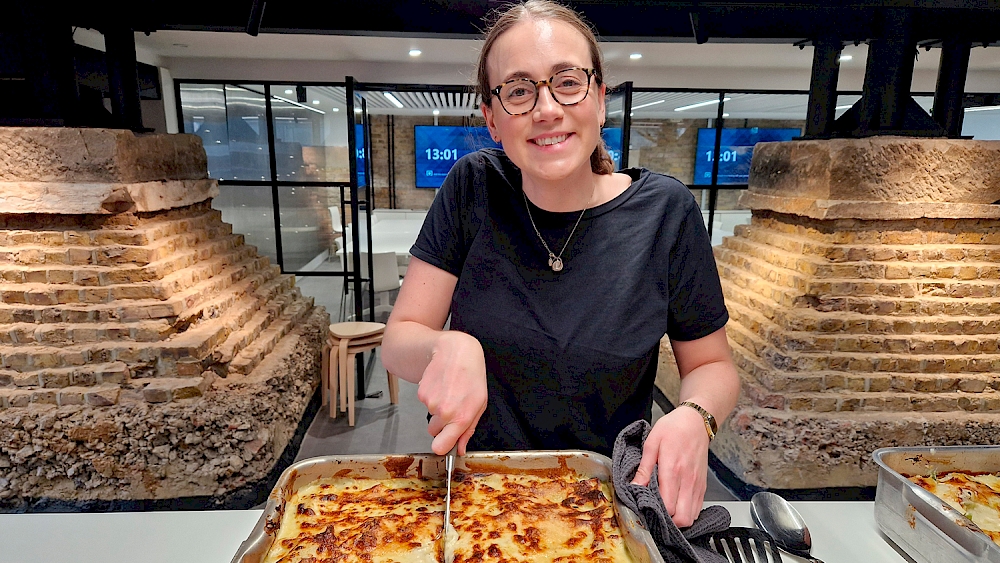
Walking tour
This 30-minute wander toured the canal basin, using the Commonplace app to highlight lace of joy – a nice place to sit and watch the world go by – as well as defects and any improvements that could be made, in the publicly accessible parts of the neighbourhood. The exercise was first undertaken eight years ago and reactivated for the conference day to see how things have changed in the years since – and to log any new pros and cons too.
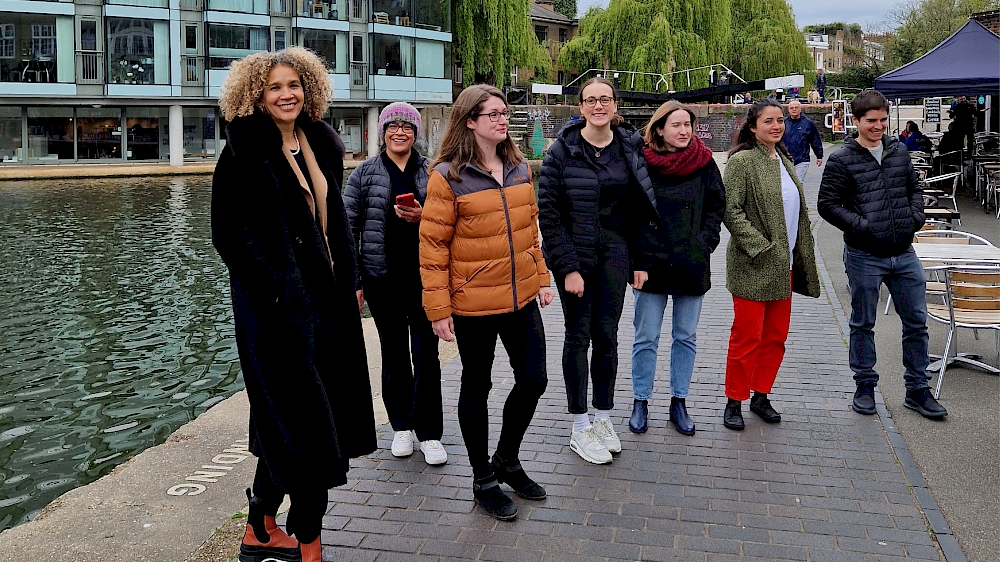
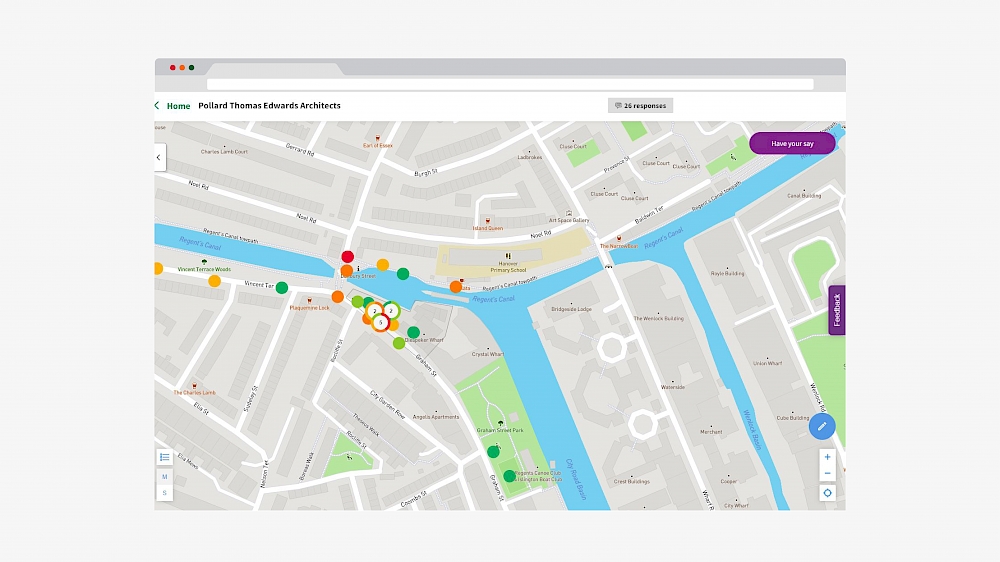
Core date workshop
Simon’s core data workshop centred on the concept of big data - and how architects can identify patterns, trends, and associations, if we can harvest large data sets generated by the design, planning and construction process. He explained how the idea emerged out of the complexities of working on large-scale, multi-practice projects, for the likes of Argent and Lendlease, in Tottenham and Silvertown.
Simon explained that building a ‘consistent and centralised database’ would allow us to provide more bespoke, specific solutions to increasingly complex architectural and urban design challenges. ‘The point here is that more data doesn't just let us see more of the same thing. More data allows us to see new. It allows us to see better and to see differently.’
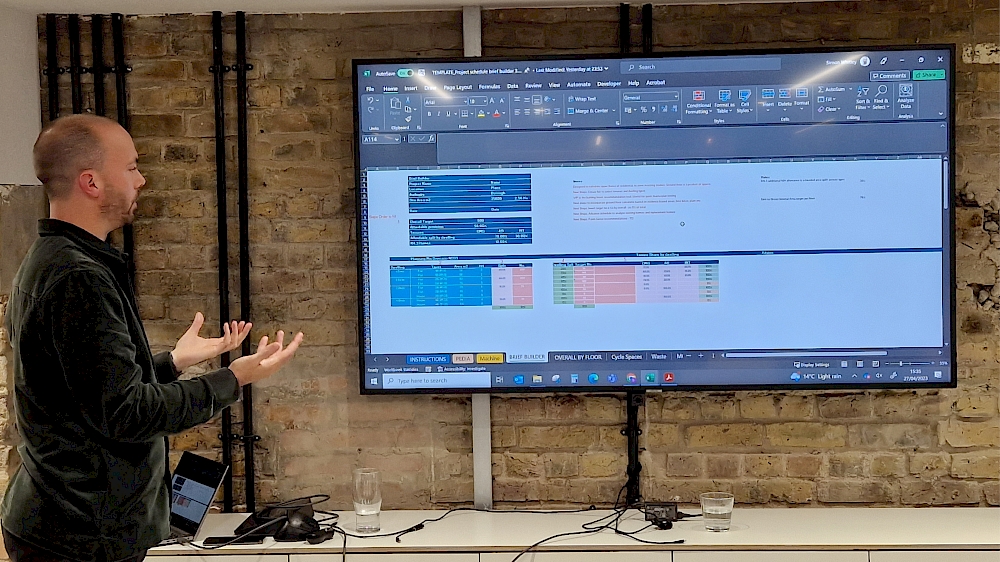
Thursday at Four
The panel debate, chaired by Roger, was a lively 90 minute affair with, as ever, great insight from expert speakers.
Tim Malbon, of PTE’s Diespeker Wharf neighbour, Made by Many, explained the challenge of the strategic design and technology sector in which his company have enjoyed great success, but where ‘working with new digital technologies is like running up a down escalator – with commercialisation chasing close behind’.
Euan Mills, whose firm Blocktype is forging and fostering a tech tool-enabled planning culture, explained that without ‘digitally-enabled automation that can speed up manual planning processes’, we’ll struggle to develop buildings and places suited to contemporary needs.
Research lead at Hassell Camilla Siggaard Andersen looked at ‘how tech can change social and economic systems’ if we ‘define what we need and [be clear] about how tech can help’ – citing a new district in Helsinki where digital tools are helping to optimise a community’s day-to-day activities ‘so everyone can get an hour more leisure time each day’.
David Janner-Klausner, co-founder and deputy CEO of Commonplace, a platform dedicated to inclusive planning, explained how online digital engagement is creating information at scale which can hold decision makers to account. Imagine: ‘Radical transparency with all comments available to consultees and clients after completion of the engagement process – forever!’ he said.
PTE Sustainable Design Specialist Grecia Castillo concluded with a run-through of her working day, and the ‘huge potential’ digital tools have to transform design quality and deliver better outcomes for end-users noting how generative software is now able to warn architects of design flaws in real-time - as BIM models are being built, for example.
Thursday at Four takeaways


